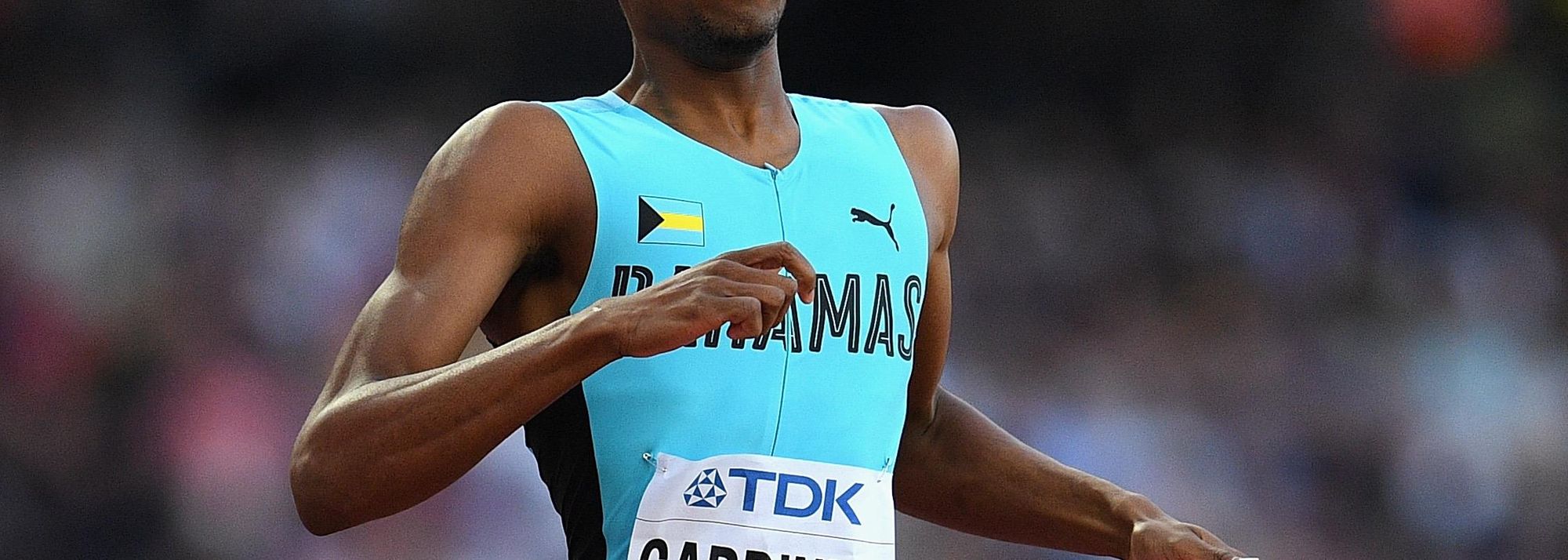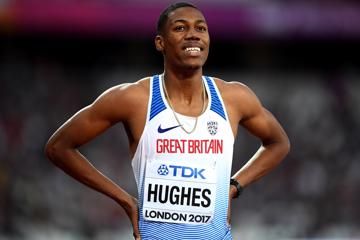Steven Gardiner in the 400m at the IAAF World Championships London 2017 (© Getty Images)
Bahamian one-lap specialist Steven Gardiner points to his 400m silver medal at the IAAF World Championships London 2017 as the pinnacle of his career so far, while his low moments came at the IAAF World Championships Beijing 2015 and at the Rio 2016 Olympic Games.
Low
I only started the track at high school as a 16-year-old. In my very first 400m race, I ran 50.01. Less than a month later I ran 48 seconds, and by the end of my first season I ran 47.78. The next season, 2014, I ran 46 (seconds) and the next 44.27 for the 400m.
Going into the 2015 World Championships in Beijing, I had high expectations. It was my first senior team and I was still kind of new to many aspects of running. I recall in the fall (autumn of 2014), I hadn’t put in a great training spell because coming from The Bahamas I wasn’t used to the cold weather in Athens, Georgia.
That same year I ran 44.27 at the national championships but for the rest of the season to run no quicker was stressful. To then fail to qualify from the semi-final (he was seventh in 44.98) at the World Championships was a big disappointment.
I also had high hopes for the 2016 Rio Olympics. In the lead up to that Games, my coach (at the time) and I returned to The Bahamas, but it was not perfect. Sometimes the track would be closed, and then in Rio, it didn’t quite happen as I exited the 400m semi-finals (in fifth in 44.72).
High
In the countdown to the 2017 season, I left my old coach and started a new journey with my current coach, Gary Evans. He has made a big difference. He is a very good friend and understands me. He knows I’m not always best during the fall season doing the longer distance work, but he encourages me to finish as best I can.
I enjoyed a very good season in 2017, winning both Diamond League races I competed in (in Doha and Stockholm) before the World Championships. I arrived in London thinking it was already an accomplishment to be there in good shape after the struggles I’d had leading into other championships.
When in London, my coach told me to focus on each round. I comfortably made it through the first round and then in the semi-finals I broke 44 seconds (running a national record of 43.89) to qualify for the final. I was surprised it felt quite normal to run that time, and that I was not in excruciating pain.
In the final with 40 metres remaining, and knowing at that point I was in second and set for a medal, I just tried to keep moving (he crossed the line in second place in 44.41). After three days of hard rounds, I was in incredible pain at the end of the race. I couldn’t even do a victory lap. A photographer from The Bahamas gave me a flag but I had to lean on him to stay upright. I had to take a wheelchair to leave the track. Thank goodness the medal ceremony was the next day.
When on the podium, I reflected on three years of hard training and the satisfaction of finally getting the job done. Even today I can’t quite believe I won the silver medal. I keep the medal on my night stand in my bedroom, which I sometimes leave open to look at. It acts as an inspiration.
Steve Landells for the IAAF








